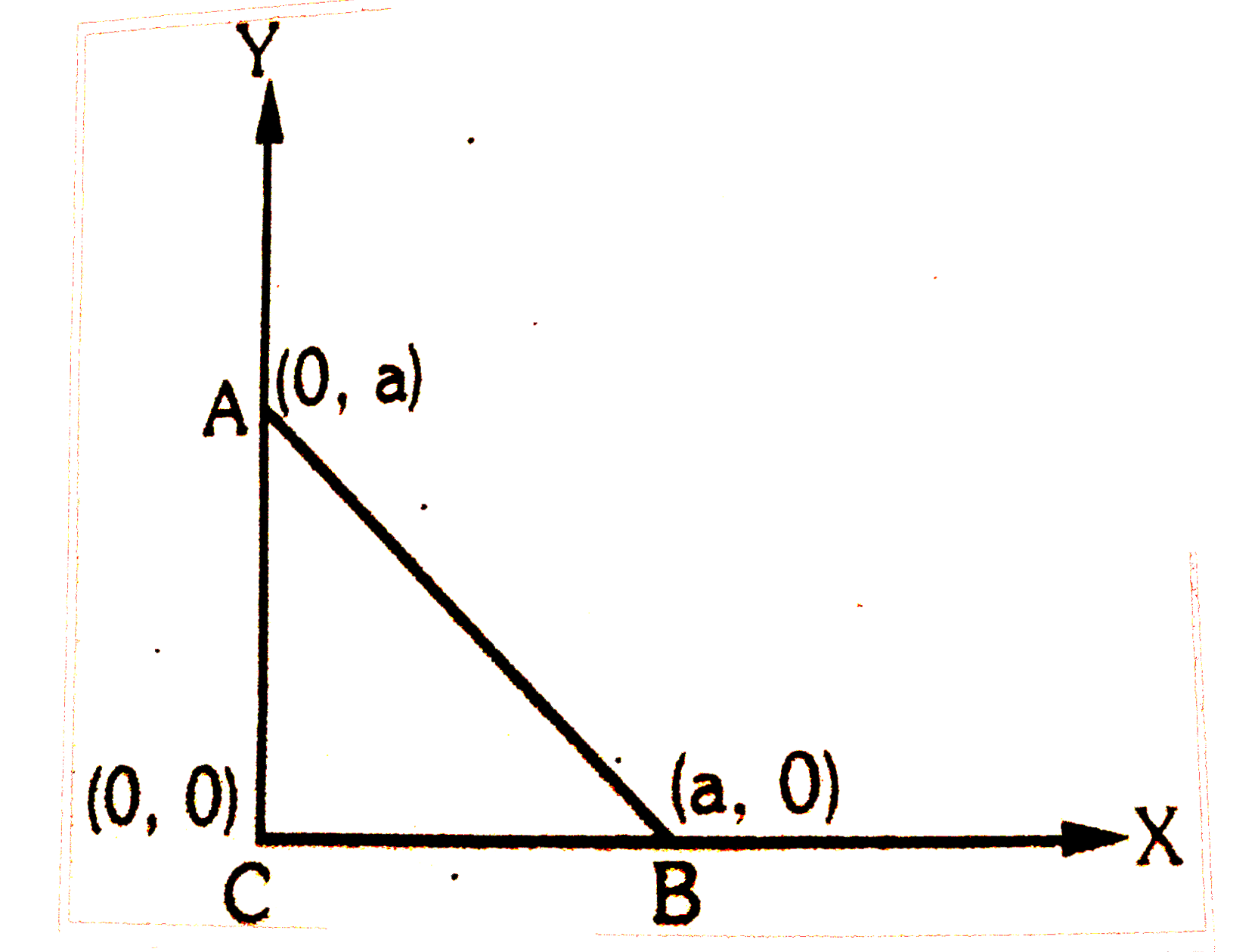The points A,B and C represent the complex numbers z1,z2,(1−i)z1+iz2 respectively, on the complex plane (where, i=√−1). The △ABC, is
a. isosceles but not right angled
b. right angled but not isosceles
c. isosceles and right angled
d. None of the aboveSolution in Punjabi
isosceles but not right angled
right angled but not isosceles
isosceles and right angled
None of the above
The correct Answer is:C
Step by step video & image solution for The points A,B and C represent the complex numbers z_(1),z_(2),(1-i)z_(1)+iz_(2) respectively, on the complex plane (where, i=sqrt(-1)). The /_\ABC, isa. isosceles but not right angledb. right angled but not isosceles c. isosceles and right angledd. None of the above by Maths experts to help you in doubts & scoring excellent marks in Class 12 exams.
Updated on:21/07/2023Topper's Solved these Questions
- COMPLEX NUMBERSBOOK - ARIHANT MATHSCHAPTER - COMPLEX NUMBERSEXERCISE - Exercise (More Than One Correct Option Type Questions)
15 Videos
- COMPLEX NUMBERSBOOK - ARIHANT MATHSCHAPTER - COMPLEX NUMBERSEXERCISE - Exercise (Passage Based Questions)
11 Videos
- COMPLEX NUMBERSBOOK - ARIHANT MATHSCHAPTER - COMPLEX NUMBERSEXERCISE - Exercise For Session 4
14 Videos
- CIRCLE BOOK - ARIHANT MATHSCHAPTER - CIRCLE EXERCISE - Exercise (Questions Asked In Previous 13 Years Exam)
16 Videos
- CONTINUITY AND DIFFERENTIABILITYBOOK - ARIHANT MATHSCHAPTER - CONTINUITY AND DIFFERENTIABILITYEXERCISE - Exercise (Questions Asked In Previous 13 Years Exam)
20 Videos
Similar Questions
If z+1z+i is a purely imaginary number (where(i=√−1), then z lies on a
View Solutionarg(¯z)+arg(−z)={π,if arg (z) <0−π,if arg (z) >0,where−π<arg(z)≤π.
If arg(z)<0, then arg (-z)-arg(z) is equal to
View SolutionIf z1,z2,z3andz4 are the roots of the equation z4=1, the value of4∑i=1z3iis
View SolutionFind the derivative of (ax4−bx2+cosx)
View SolutionFor every pair of continuous function f,g:[0,1]→R such that max {f(x):x∈[0,1]}=max{g(x):x∈[0,1]}. The correct statement(s) is (are)
View SolutionIf z_(1),z_(2),z_(3) are the vertices of an isosceles triangle right angled at z_(2), then prove that (z_(1))^(2)+2(z_(2))^(2)+(z_(3))^(2)=
View SolutionComplex numbers z_(1),z_(2),z_(3) are the vertices A,B,C respectively of an isosceles right angled trianglewith right angle at C and (z_(1)-z_(2))^(2)=k(z_(1)-z_(3))(z_(3)-z_(2)) then find k.
View SolutionComplex numbers of z1,z2,z3 are the vertices A, B, C respectively, of on isosceles right-angled triangle with right angle at C. show that (z1−z2)2 = 2(z1−z3)(z3−z2)
View SolutionComplex numbers z1,z2andz3 are the vertices A,B,C respectivelt of an isosceles right angled triangle with right angle at C. show that (z1−z2)2=2(z1−z3)(z3−z2).
View SolutionIf the points represented by complex numbers z1=a+ib,z2=c+z1−z2 are collinear, where i=√−1, then
View SolutionThe points A,B and C represent the complex numbers z1,z2,(1−i)z1+iz2 respectively, on the complex plane (where, i=√−1). The △ABC, is
View Solutionसमद्विबाहु समकोणीय त्रिभुज (C पर समकोण) से शीर्षो A,B,C द्वारा क्रमशः सम्मिश्र संख्याएँ z1,z2,z3 निरूपित है सिद्ध कीजिए कि
(z1−z2)2=2(z1−z3)(z3−z2)

View SolutionThe vertices A,B,C of an isosceles right angled triangle with right angle at C are represented by the complex numbers z1z2andz3 respectively. Show that (z1−z2)2=2(z1−z3)(z3−z2).
View SolutionLet the complex numbers Z1,Z2andZ3 are the vertices A, B and C respectively of an isosceles right - angled triangle ABC with right angle at C, then the value of (Z1−Z2)2(Z1−Z3)(Z3−Z2) is equal to
View Solutionसम्मिश्र संख्यायें z1,z2,z3 क्रमशः समद्विबाहु समकोण त्रिभुज जो कि c पर समकोण है के शीर्ष A,B,C है तो प्रदर्शित कीजिए (z1−z2)2=2(z1−z3)(z3−z2)
View SolutionComplex numbers z1,z2andz3 are the vertices A,B,C respectivelt of an isosceles right angled triangle with right angle at C. show that (z1−z2)2=2(z1−z3)(z3−z2).
View Solution
